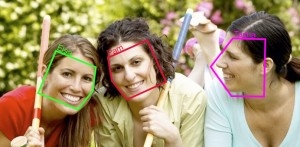 On July 22 2011, Google acquired PittPatt, the Pittsburgh Pattern Recognition Team, a privately-held spin out of CMU Robotics.
On July 22 2011, Google acquired PittPatt, the Pittsburgh Pattern Recognition Team, a privately-held spin out of CMU Robotics.
Three questions jumped out when I learned of this acquisition.
- Why? Doesn't Google already have face recognition technology?
Unfortunately, based on the publicly available information, it's not clear what is new or different about PittPatt's technology. Okay, so they have an SDK. There are several possible explanations for this acquisition. Maybe the previous facial recognition technology Google had acquired with Neven Vision in August 2006 then released as part of Picasa in 3rd quarter 2008 (it appeared in Picasa as early as May 2007) was insufficient. Insufficient could mean inaccurate too often, too difficult to implement in mobile, not scalable. That doesn't seem likely.
Maybe the difference is that the PittPatt technology was working on video as well as still images. YouTube already has a face recognition algorithm, but it is not real time. For AR it would be valuable if the face recognition and tracking performs reliably in real time.
Another possible explanation has to do with IP. Given the people who founded PittPatt, perhaps there are some intellectual properties that Google wants for itself or to which it wants to prevent a competitor to have access.
- What are the hot "nearby" properties that will get a boost in their valuation as a result of Google's purchase?
Faces are the most important attribute we have as individuals and the human brain is hard wired to search for and identify faces. Simulating what our brains do with and for faces is a fundamental computer vision challenge. Since this is not trivial and so many applications could be powered by face recognition (and when algorithms can recognize faces, other 3D objects will not be far behind), there's always a lot of resources going into developing robust, accurate algorithms.Many–perhaps dozens–of commercial and academic groups continually work on facial recognition and tracking technology. Someone has certainly done the landscape analysis on this topic. One of the face recognition research groups with which I've had contact is at Idiap in Martigny, Switzerland. Led by Sebastien Marcel, this research team is focusing on the use of such highly accurate facial recognition that it can be the basis for granting access. KeyLemon is an Idiap spin off using the Idiap technology for biometric authentication to personal computers. And, there is (almost certainly) a sizable group already in Google dedicated to this topic.
- What value added services or features can emerge that are not in conflict with Google's privacy policy and haven't been thought of already/implemented by Google and others?
This is an important question that probably has a very long and complex, multi-part answer. I suspect it has a lot to do with 3D objects. What's great about studying faces is that there are so many different ones to work with and they are plastic (distort easily). When the algorithms for detecting, recognizing and tracking faces in video are available on mobile devices, we can imagine that other naturally occurring and plastic objects would not be too far behind.
I hope Eric Schmidt is proven wrong about there not being facial recognition in the future of Google Goggles and similar applications and we see what is behind the curtain in the PittPatt acquisition!
